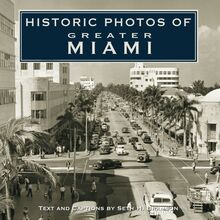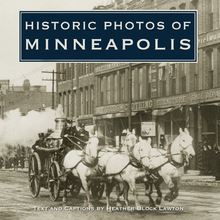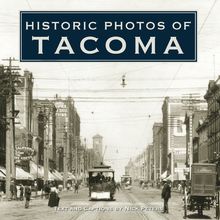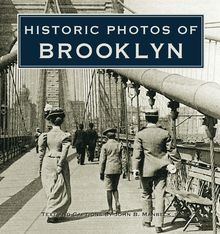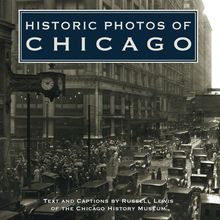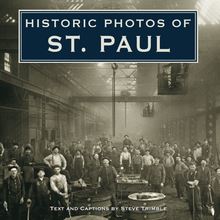Historic Photos of Detroit , livre ebook
197
pages
English
Ebooks
2007
Vous pourrez modifier la taille du texte de cet ouvrage
Obtenez un accès à la bibliothèque pour le consulter en ligne En savoir plus
Découvre YouScribe en t'inscrivant gratuitement
Découvre YouScribe en t'inscrivant gratuitement
197
pages
English
Ebooks
2007
Vous pourrez modifier la taille du texte de cet ouvrage
Obtenez un accès à la bibliothèque pour le consulter en ligne En savoir plus
Publié par
Date de parution
01 janvier 2007
Nombre de lectures
1
EAN13
9781618586230
Langue
English
Poids de l'ouvrage
9 Mo
Detroit is an American city quintessentially founded upon change. From its birth to the present, Detroit has consistently built and reshaped its appearance, ideals, and industry. Through changing fortunes, Detroit has continued to grow and prosper by overcoming adversity and maintaining the strong, independent culture of its citizens.
Historic Photos of Detroit captures this journey through still photography selected from the finest archives. From Detroit as pioneer of the motor vehicle to becoming the main hub for World War munitions, Historic Photos of Detroit follows life, government, education, and events throughout the city’s history.
This volume captures unique and rare scenes through the lens of hundreds of historic photographs. Published in striking black and white, these images communicate historic events and everyday life of two centuries of people building a unique and prosperous city.
Looking for more history of Detroit? Check out the companion title Historic Photos of Detroit in the 50s, 60s, and 70s.
Publié par
Date de parution
01 janvier 2007
Nombre de lectures
1
EAN13
9781618586230
Langue
English
Poids de l'ouvrage
9 Mo
HISTORIC PHOTOS OF
DETROIT
T EXT AND C APTIONS BY M ARY J. W ALLACE
Women at the American Car and Foundry Plant make munitions for the American war effort (ca. 1918).
HISTORIC PHOTOS OF
DETROIT
Turner Publishing Company
200 4th Avenue North Suite 950
Nashville, Tennessee 37219
(615) 255-2665
www.turnerpublishing.com
Historic Photos of Detroit
Copyright 2007 Turner Publishing Company
All rights reserved.
This book or any part thereof may not be reproduced or transmitted in any form or by any means, electronic or mechanical, including photocopying, recording, or by any information storage and retrieval system, without permission in writing from the publisher.
Library of Congress Control Number: 2006909504
ISBN-13: 978-1-59652-312-8
ISBN: 1-59652-312-3
Printed in China
09 10 11 12 13 14-0 9 8 7 6 5 4 3
C ONTENTS
A CKNOWLEDGMENTS
P REFACE
F ROM THE C IVIL W AR TO H ENRY F ORD (1860-1899)
B UILDING I NDUSTRY AND C OMMUNITY (1900-1919)
F ROM S OARING S KYSCRAPERS TO S TOCK M ARKET C RASH (1920-1941)
H OPING FOR R ENEWAL IN M OTOR C ITY (1942-1969)
N OTES ON THE P HOTOGRAPHS
The Ambassador Bridge on its fortieth anniversary, 1969. That year the bridge was improved with the installation of new wiring, new mercury vapor lamps, and new electrical transformers.
A CKNOWLEDGMENTS
This volume, Historic Photos of Detroit , is the result of the cooperation and efforts of many individuals, organizations, and corporations. It is with great thanks that we acknowledge the valuable contribution of the following for their generous support:
The Walter P. Reuther Library, Wayne State University (WSU)
The Burton Historical Collection, The Detroit Public Library (DPL)
We would also like to thank the following individuals for valuable contributions and assistance in making this work possible:
Joseph and Lillian Adragna, Historians
Alberta Asmar, Secretary, Walter P. Reuther Library, WSU
Mark Bowden, Assistant Manager, Burton Historical Collection, DPL
Elizabeth Clemens, Audiovisual Archivist, Walter P. Reuther Library, WSU
Dawn Eurich, Assistant Manager, History and Travel Department, DPL
Thomas Featherstone, Audiovisual Archivist, Walter P. Reuther Library, WSU
Mark Patrick, Coordinator for Special Collections, DPL
Kathleen Schmeling, Associate Director, Walter P. Reuther Library, WSU
Mike Smith, Director, Walter P. Reuther Library, WSU
On a personal note, the author would like to thank Jim Wallace for his encouragement, assistance, and support.
P REFACE
Detroit has thousands of historic photographs that reside in archives, both locally and nationally. This book began with the observation that, while those photographs are of great interest to many, they are not easily accessible. During a time when Detroit is looking ahead and evaluating its future course, many people are asking, How do we treat the past? These decisions affect every aspect of the city-architecture, public spaces, commerce, infrastructure-and these, in turn, affect the way that people live their lives. This book seeks to provide easy access to a valuable, objective look into the history of Detroit.
The power of photographs is that they are less subjective than words in their treatment of history. Although the photographer can make decisions regarding subject matter and how to capture and present it, photographs do not provide the breadth of interpretation that text does. For this reason, they offer an original, untainted perspective that allows the viewer to interpret and observe.
This project represents countless hours of review and research. The researchers and writer have reviewed thousands of photographs in numerous archives. We greatly appreciate the generous assistance of the individuals and organizations listed in the acknowledgments of this work, without whom this project could not have been completed.
The goal in publishing this work is to provide broader access to this set of extraordinary photographs that seek to inspire, provide perspective, and evoke insight that might assist people who are responsible for determining Detroit s future. In addition, the book seeks to preserve the past with adequate respect and reverence.
With the exception of touching up imperfections caused by the damage of time and cropping where necessary, no other changes have been made. The focus and clarity of many images is limited to the technology and the ability of the photographer at the time they were taken.
The work is divided into eras. Beginning with some of the earliest known photographs of Detroit, the first section records photographs through the end of the nineteenth century. The second section spans the beginning of the twentieth century through World War I. Section Three moves from the 1920s to the 1940s. The last section covers the World War II era to recent times.
In each of these sections we have made an effort to capture various aspects of life through our selection of photographs. People, commerce, transportation, infrastructure, religious institutions, and educational institutions have been included to provide a broad perspective.
We encourage readers to reflect as they go walking in Detroit, strolling through the city, its parks, and its neighborhoods. It is the publisher s hope that in utilizing this work, longtime residents will learn something new and that new residents will gain a perspective on where Detroit has been, so that each can contribute to its future.
Todd Bottorff, Publisher
East side of Woodward Avenue, north of Gratiot (ca. 1870s). In 1911, it became the site of the well-known and now demolished J. L. Hudson Store.
F ROM THE C IVIL W AR TO H ENRY F ORD
1860-1899
Founded in 1701 by a team of French explorers led by Antoine de la Mothe Cadillac, Detroit was established as an important link in the lucrative European fur trade. Detroit s location on the river allowed easy access to the East via water and, because it was located on a high bluff at the narrowest point of the Detroit River, any establishment built there would be easy to defend. Cadillac and his party built Fort Pontchartrain there, and thus began the modern history of the city of Detroit.
By the mid nineteenth century, Detroit no longer belonged to the French, and the substantial revenue from the fur trade was long gone. Because of the vast resources to which the city of the straits had access, Detroit continued to thrive.
In 1837, Michigan was officially admitted to the Union as the 26th state. In the 1840s, the capital of the state was moved from Detroit to Lansing and the city s population surpassed 10,000. European immigration helped fill the city with people, some of whom used their native expertise to start new businesses. German immigrants began more than twenty breweries in the city. As the century marched on, industries arose that were based on Detroit s access to iron mined from Michigan s upper peninsula, leading to the manufacture of railroad cars, iron stoves, and steel rails. A varnish, a pharmaceuticals, and a seed company broadened the city s industrial ranks.
The physical appearance of the city was changing too. A new city hall was built in 1871. The city s tallest building, the 10-story Hammond Building opened in 1889, and in 1896, the 14-story Majestic Building replaced it as the tallest building in Detroit. Crowding in Detroit s streets was alleviated as the Detroit City Railway laid tracks downtown for its growing horse-drawn street railway system. By the 1890s, horse-drawn streetcars had been replaced by electric. The City of Detroit also purchased an island in the middle of the Detroit River, Belle Isle, with in mind creating a place for families to picnic and enjoy nature.
The Civil War touched Detroit when the city sent approximately 6,000 men to fight. In 1861, thousands of Detroiters gathered in the center of town, Campus Martius, for a formal ceremony to give the newly trained soldiers of Michigan s First Regiment a proper send-off. After the war, the city commemorated the sacrifice of those who served, by erecting a Soldiers and Sailors Monument at the city center, a shrine that still stands today.
In 1896, Detroiters saw Charles King drive the first automobile on city streets. That same year, a little-known engineer from Edison Illuminating Company, Henry Ford, devised his first car in a workshop on Bagley Street, west of downtown. In those waning days of the nineteenth century, no Detroiter would have suspected that the unfamiliar new vehicle called the automobile would so profoundly transform their city and shape its destiny for generations to come.
St. Andrews Bazaar at the southwest corner of Woodward and State Street (ca. 1869). Woodward Avenue had been a Native American path but soon became Detroit s main artery. It was named for Judge Augustus Brevoort Woodward.
The men of First Michigan Regiment take part in a formal ceremony at Campus Martius two days before leaving for the war front. After the attack on Fort Sumter, Michigan troops were among the first to respond to President Lincoln s call for volunteers. (May 11, 1861)
Crowds gather in front of the federal post office in April 1861 for news about the Civil War.
Stephen Smith Boots and Shoes, at the northwest corner of Woodward and Larned (ca. 1860s)
Old Russell House hotel on Woodward Avenue near Campus Martius (ca. 1860)
Looking west down Jefferson Avenue at Woodward Avenue (ca. 1870)
East side of Woodward Avenue between State Street and Grand River (ca. 1876)
Looking west down Jefferson at Griswold
The east side of Woodward Avenue (ca. 1867)
Image of an early streetcar, perhaps Detroit s first
Crossing Woodward Avenue (ca. 1872)
Webster School at 1280 Twenty First Street (ca.





